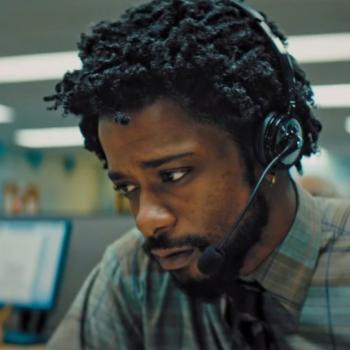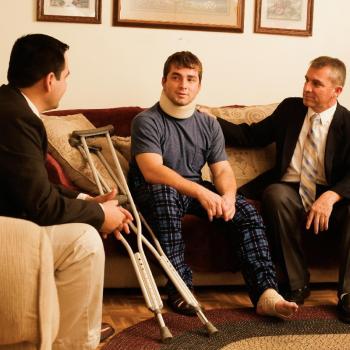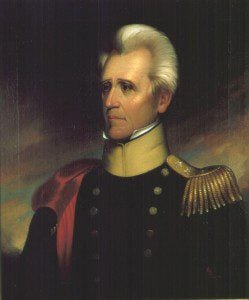
Editors Note: This post isn’t about Mormonism, since it is an unpublished blog for a non-religious publication. However, I think it’s an idea still worth exploring, and since Halloween is around the corner, why not?
Let’s talk about monsters. Specifically, zombies. Monsters in books or film tend to serve a purpose, to reimagine some abstract fear into a corporeal entity. Beings like Frankenstein’s monster or Dracula challenge our hubris over science, or our relationship with lust and nature. Zombies reach into our actual fears about society and, ultimately, each other. This is what first launched zombies into the pop culture zeitgeist with George A. Romero’s Night of the Living Dead almost fifty years ago.
But Night of the Living Dead was a long time ago. What are zombies such a fashionable monster in the post 9/11 world? The Walking Dead has been both cashing in on the trend, while also making the best of it. But it is a trend, and that’s not meant as a criticism so much as an insight into the nature of the genre itself.
So what is it about these monsters that intrigue modern audiences more than werewolves or Frankenstein? For some reason, we collectively eat up anything zombie-related—movies, tv, comics, whatever—with the same fevered hunger of a fresh corpse chowing down on their first bloody platter of brains.
The rage victims from 28 Days Later are in many ways more terrifying than classical zombies precisely because they are still alive. The zombies in the Dead films are slow because a slow-moving threat is unexpected, but inevitable. There are, of course, arguments about whether or not the undead should even be capable of running with rotting muscles and brittle bones, but the psychological aspect is much more important and much more central to Romero’s films. See, the Dead films were produced and released over decades, and portray society’s collapse essentially in real time. We are given no indication that the fictional time difference between 1968’s Night of the Living Dead and its 1978 sequel Dawn of the Dead is shorter than the films’ release dates. It’s not until Day of the Dead, released in 1985, that the chaos of the dead rising from their graves results in a global catastrophe of apocalyptic proportions. That’s almost two decades after the zombies claim their first victims. Like the ghouls themselves, the societal decay is creeping along, slowly, and growing more putrid and horrible with each installment.
Contrast that to the modern zombie phenomena. Nowadays, the word “zombie” is usually followed immediately by “apocalypse.” But the concept of immediate dissolution of society thanks to an outbreak of zombies wasn’t really introduced until 28 Days Later. In fact, it’s the whole premise—an exploration of how quickly society could collapse if something so dangerous spread that fast. The running and screaming rage-victims are a literal manifestation of that, but there’s a bigger fear in play as well. There is one significant difference between the zombie fear of commercialism reflected in the masses of undead in Romero’s films and the current wave of zombie obsession that is so often accompanied by complete infrastructure breakdown. One key element missing from Romero’s classic films but present in the 21st century.
It’s the internet. Of course.
Or technology in general. When 28 Days Later was released, Y2K was fresh on everyone’s mind—a singular even that could theoretically wipe out all of civilization in one move. It wasn’t the fear of the even that scared everyone into obsession and stocking up on duct tape and water bottles, but the unknown reality of life afterward. Hence, the action in 28 Days Later takes place a month after the event. It was a perfect embodiment of our uniquely 21st century fears of what society would become—post Y2K, post 9/11, post-internet.
I’m not suggesting 28 Days Later was the first story or film to evoke the zombie apocalypse. The aforementioned Living Dead films had dealt with the subject three times before Boyle’s film. But it was 28 Days Later that suggested the decline of civilization could occur within a matter of weeks. The Walking Dead assumes this premise as an obvious development in the wake of the unexplained rising dead. Similar to 28 Days Later, Rick wakes up in a hospital, abandoned, and has to find what’s left of society. The show doesn’t give a clear timeline of Rick’s hospital stay, but considering he couldn’t have survived long in a coma without constant medical supervision, it’s a safe to assume that The Walking Dead’s society collapses at least as quickly as 28 Days Later.
What does this translate to the audience? It speaks to the fragility of our infrastructure, now that it is built on the Internet. When communication and information is instantaneous, it’s only logical that the something catastrophic were to take place, our society would crumble into a bleak nightmare just as immediately. It also illustrates how reliant we are on this external network. In Dawn of the Dead, television crews and radio programs carry on in both an important storytelling mode but also as disconnected narratives. In 21st century zombie films, the loss of instant media is part of the devastation. There is no longer a means to connect to fellow survivors. Which leads us to an even more primal fear: ourselves.
See, the villains in the post-apocalyptic zombie films are never the zombies themselves, but other survivors. The setting is an experiment in human nature and morality. In 28 Day Later—released during the wake of 9/11 and the U.S.’ military reaction—the villains are the military, who take liberties with the power their strength gives them. But in The Walking Dead, the villains are closer and more personal, often finding power in the aftermath of the walkers that they never exercised during peacetime.
The post-apocalyptic wasteland brings out the best in some of us, and the worst in others, but most importantly it forces us to reckon with a sense of human interaction that we might feel uncomfortable with during a time when most social interactions take place behind the safety of pre-constructed digital network. Lopping off a rotting corpse skull with a shovel is child’s play compare to the absolute horror of talking to a stranger. The Walking Dead scares us not because the dead come back to life, but because in the wake of a total civilization collapse, we might have to venture out and talk to our neighbors. The reason we don’t do that now is because we secretly fear the kind of people they might really be. The Walking Dead validates those fears.
Like I said before, The Walking Dead is probably the peak of modern zombie hype, both in artistic terms and simply by scale. It utilizes an aesthetic made popular by George A. Romero, and builds on the paranoia 28 Days Later embodied. However, despite their similarities—even in choices of opening sequences—they are uniquely different stories. 28 Days Later is an artistic statement both in its use of a then-dated zombie motif, resurrecting it for future creators to jump in on the craze. Incidentally, The Walking Dead creator Robert Kirman was working on the first issue of the comics while 28 Days Later was in production. Whatever was happening in the world that led both creators to illustrate similar visions of a ghoul-infested dystopia, the only thing we know for sure is we’re left to consume the results like the horde of mindless zombies we are.
* Of course, purists will argue that the monsters in 28 Days Later aren’t zombies in the same sense as the walkers, and they’re right. The walkers on television visually and stylistically have much more in common with Night of the Living Dead. But the catch all term “zombie” doesn’t have to refer solely to the living dead, but rather a horde of humans (or former-humans) who are no longer capable of individuality, where the threat is not intellectual but from the sheer population of the danger.












